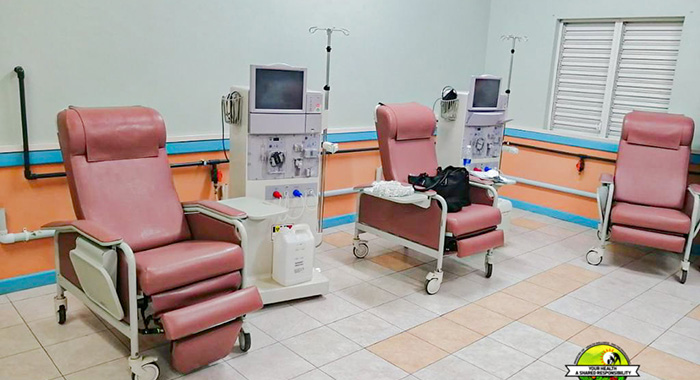Nearly half of the people who have been receiving dialysis at the Modern Medical and Diagnostic Centre in Georgetown since 2018 have died.
“Three or four” of them have recovered and no longer need to receive dialysis, Minister of Health, Jimmy Prince told Parliament last week.
He was responding to a question from West Kingstown, Daniel Cummings, who noted the recent announcement by the government that people can access dialysis treatment for free at the health facility in Georgetown.
Cummings asked the minister to say the total number of patients who have received this treatment at the government facility to date; how often they receive the treatment; and how many of these patients have since died.
Prince said 176 patients — 88 females and 88 males — had been dialysed since the facility became operational in 2018.
He said patients receive dialysis two or three times per week but a patient may require more frequent sessions, depending on their health condition.
“Notably, at the initial phase of treatment, a patient will have dialysis done daily for the first two days. This is done for a shorter period of two hours,” Prince said.
He said 80 patients have since died, adding that some patients have migrated, others have switched to the private company and “three or four” patients have recovered and no longer need the treatment.
Prince said that most patients who have died had other comorbidities such as lupus, cancer, and non-communicable diseases.







The article would have been more complete had it included comparable stats from other countries. A nearly 50% mortality rate sounds very, very high but is it really?
I totally agree with your comment. The information remains vacuous with nothing to juxtapose what is said, .. which leads me to this thought! I wonder if ‘stress’ could have contributed to that supposedly high mortality rate? Let’s say a dialysis patient who lives in North Leeward, having to travel to the Medical Facility at Georgetown once or twice per week (or however often his/her treatment may require). The financial burden alone must cause extraordinarily high stress level, compounded with other health issues.
Location, location, location! A terribly bad decision. Some say “selfish and autocratic”) to have built that facility in his hometown constituency. A more central location would have lessened the stress and ultimate death-rate.
What do you think?